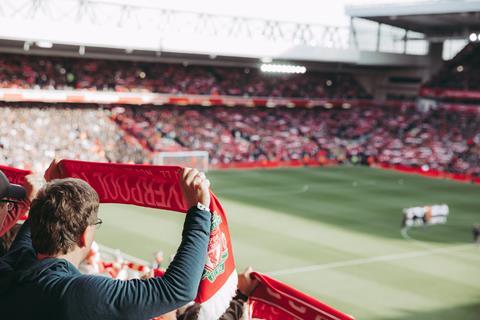Paul Calleja, CEO of GlobalM, looks at how last-minute rights deals can complicate distribution

The globalisation of sport means that audiences now measure in the billions for the largest events, and viewers confidently expect to be able to turn on and watch the action unfold in real-time anywhere in the world. However, broadcasting live sport on a global basis still presents challenges, especially when it comes down to rights issues.
A complex international sports market
The globalisation of sports means that rights negotiations often involve international considerations. Negotiators must account for different time zones, cultural nuances, and legal frameworks when dealing with multiple markets. There is also often intense competition among broadcasters and platforms for exclusive rights, and negotiators have found themselves having to navigate new distribution models and revenue-sharing arrangements to get deals over the line.
This can often happen at short notice. Sport in a truly global market means there can be interest in one part of the world if a country’s team or player does well in an event in another. Likewise, sponsors may wish to leverage interest to target audiences in new territories. The result is that in a shifting patchwork of moving sporting calendars, brand strategies, and audience interests, being able to react fast to make the most of opportunity is a key attribute for success.
Last-minute rights negotiations
But while live sport distribution rights are often finalised down to the wire, this is largely incompatible with allocating satellite capacity which needs to be booked well in advance. Many regions and broadcasters rely on a limited number of key satellites and satellite neighbourhoods for their needs, and while satellite companies always keep some capacity back for occasional use, the supply is limited. The knock on effect of that is that last-minute negotiations may result in higher costs and rushed logistics for technical setups.
The problems of last minute sport bookings are not just limited to those that can occur in orbit either. There can be multiple issues with venue access. While many stadia have comprehensive cable installations and in-built connectivity, if a sporting event is not a venue owner’s sole focus — which often happens when broadcasting niche sports from multi-purpose venues — then there can be issues implementing a production plan at speed.
Getting the right team in place
There can also be pronounced difficulty in assembling and coordinating production teams and technical staff at short notice, especially at busy times in the sporting and live events calendar. This can lead to an increased likelihood of technical glitches and transmission problems due to insufficient testing and setup time. Scaling issues can be a challenge here too, as some gateway technology does not have the required scaling capabilities. If last minute rights holders need to be added to a typical gateway, it can overload and cause the server to fail. Some operators mistakenly believe they can scale central server architecture, however, when they attempt to add another rights holder it can cause significant issues and delays when the right infrastructure is not in place.
The risk of failure to meet viewer expectations with quality that is below standard is a crucial concern, and can lead to negative audience feedback and reputational damage that it takes a long time to recover from. In a competitive market for viewer eyeballs the bar is set high, and loss of signal and poor audio visual quality are red flags for viewers that can see them vote with their remote controls and switch channels, no matter the loyalties they feel to a sporting property.
Managing resources and pressure
As a result of these interlinked pressures, there have been significant resources devoted to developing IP contribution and distribution as a complementary technology to satellite. At GlobalM, we have identified a need to deploy software-defined video networks at extremely short notice, and unlike standard IP gateways, the fast turnaround has no impact on the network’s ability to scale. As IP technology matures, there is also a requirement for it to fit seamlessly into existing broadcast workflows. For example, it is now possible to emulate a traditional router panel, enabling scheduling, routing, and monitoring that is similar to conventional master control room procedures, as well as mimicking the point to multipoint features of traditional satellite systems.
The ideal scenario is that while users manage video services, effective cloud orchestration can handle the underlying processes, efficiently allocating resources for each transmission, which prevents issues when adding extra end-points. Often broadcasters don’t know in advance how many rights holders will join the pool, and therefore a standard gateway approach cannot handle transmissions where the content owner isn’t sure how many end-points there will ultimately be. With an automated process, users get the benefit of an open-ended IP system that can scale in real time, even during a transmission.
Delivering seamless scalability
For broadcast engineers that are accustomed to traditional processes, they should still be able to seamlessly engage with cloud systems. We need to adapt IP technology to its users, rather than the other way around. The right video networking solution is crucial for maintaining cost-effective operations, never more so when broadcasters have to adapt in an agile manner to maximise opportunities.
Network configurations need to be fast, reliable, and secure to meet viewer expectations. Increasingly broadcasters and rights holders are looking for solutions that provide the right support for tight turnarounds. IP technology should respond to the realities of these high pressure sports broadcast environments, the solution should solve real-world problems and users should not have to compromise due to technical limitations. Sport broadcasters need delivery methods that can scale at the speed of live.

Paul Calleja is CEO of GlobalM








No comments yet